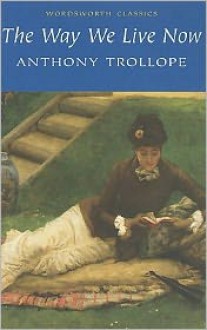The Way We Live Now—regarded by many as Anthony Trollope's greatest novel—encompasses in its broad scope much of the business, political, social, and literary life of 1870s London. At its centre is the larger-than-life figure of Augustus Melmotte, a financier of uncertain background who rises to...
show more
The Way We Live Now—regarded by many as Anthony Trollope's greatest novel—encompasses in its broad scope much of the business, political, social, and literary life of 1870s London. At its centre is the larger-than-life figure of Augustus Melmotte, a financier of uncertain background who rises to great heights over a financial speculation scheme involving plans for a railway in America. "I was instigated by what I conceived to be the commercial profligacy of the age," Trollope wrote of this novel, and the work remains one of the world's most ambitious fictionalized critiques of capitalism. It also provides unique insight into the operation of the late-Victorian literary world, into the dynamics of anti-Semitism in the Victorian period, and into a number of other subjects of continuing interest. More than that, it remains among the most readable of Trollope's many novels.The Way We Live Now was initially published in serialized form in monthly shilling parts that appeared between February 1874 and September 1875. The full work was first published in book form in 1875, in two volumes. That same year a one-volume edition was published by Harper & Brothers in the United States. Both 1875 publications in book form included the illustrations that Lionel Grimshaw Fawkes had prepared for the publication in serial form; it is the one-volume Harper & Brothers edition that is reproduced here.This is one of a series from Broadview Press of facsimile reprint editions—editions that provide readers with a direct sense of these works as the Victorians themselves experienced them.
show less

